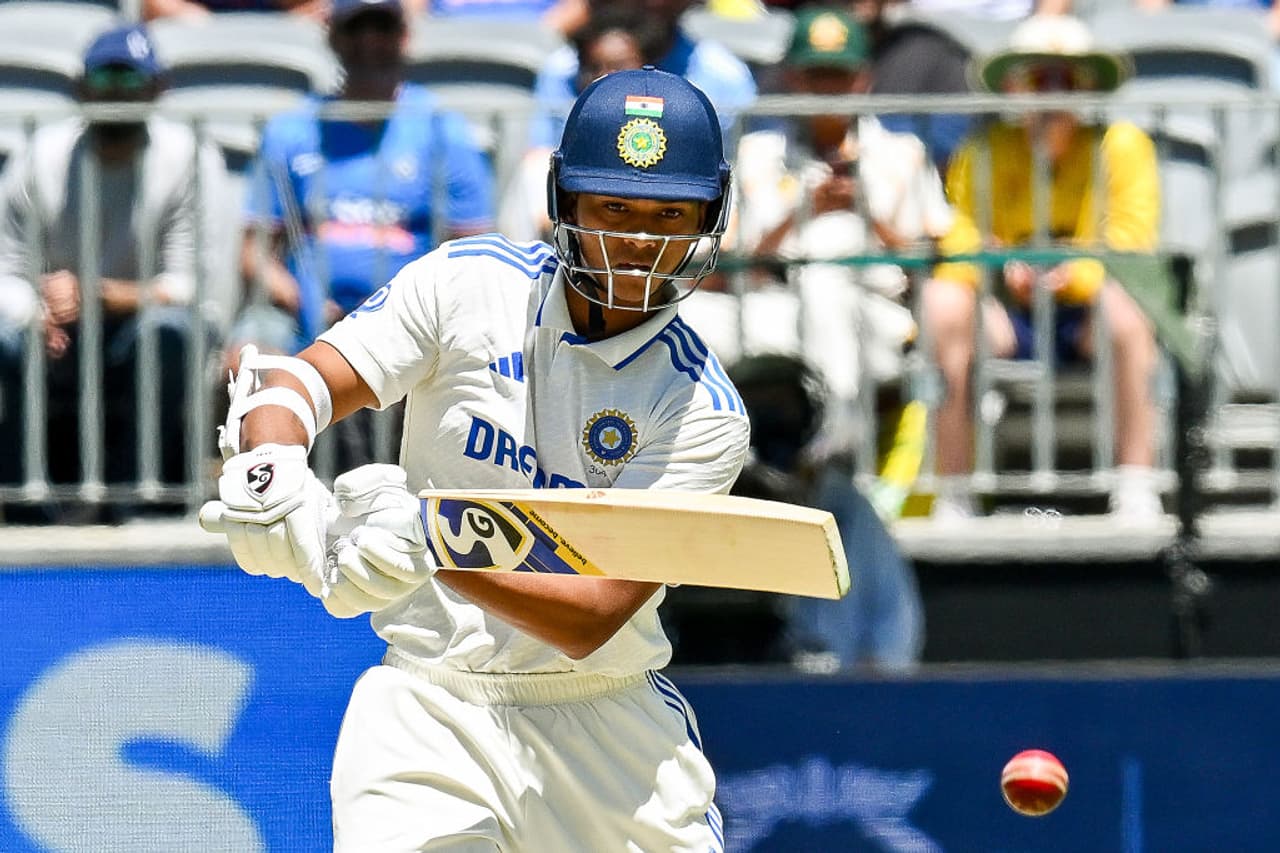- Home
- Sports
- Cricket
- Jasiwal shines in Perth: How 200-over training, inclined concrete slab, lighter synthetic balls helped batter
Jasiwal shines in Perth: How 200-over training, inclined concrete slab, lighter synthetic balls helped batter
The seeds of Yashasvi Jaiswal’s stellar unbeaten 90 against Australia in the opening Test were sown at the Thane Stadium, where the young Indian batsman undertook a unique and rigorous training regimen to prepare for the steep bounce of Australian pitches.

Image Credit: Getty Images
The seeds of success are often sown through thorough preparation, and Yashasvi Jaiswal’s intense and innovative pre-tour training against short-pitched deliveries at Thane Stadium played a crucial role in his unbeaten 90 on the second day of the opening Test in the Border-Gavaskar Trophy series against Australia in Perth on Saturday. This dedication echoes iconic moments in Indian cricketing history, such as Rahul Dravid’s rigorous hours at the National Cricket Academy before the 2011 England tour or Sachin Tendulkar replicating Shane Warne’s leg breaks by creating rough patches and training with Laxman Sivaramakrishnan.

Image Credit: Getty Images
Jaiswal, hailed as India’s next batting superstar, isn’t overly meticulous about his training methods but has honed many of his skills under the guidance of Zubin Bharucha, Rajasthan Royals' Director of Cricket. Since the pandemic lockdown, Jaiswal has been a regular at their academy in Talegaon, Maharashtra.
However, with limited time between the New Zealand series and the tour of Australia, Jaiswal had to quickly adapt both mentally and technically. He shifted focus from negotiating rank turners at home to countering the steep bounce anticipated in Australia, especially on the fast, bouncy track of Perth.
Image Credit: Getty Images
For two grueling days, Jaiswal trained relentlessly at Thane Stadium near his home, facing around 200 overs of throw-downs daily. A concrete slab inclined at 45 degrees was strategically placed at a short-of-length area (around 10 meters) to simulate challenging bounce. Using orange and yellow balls delivered at speeds of around 145 km/h, throw-downs targeted his rib cage and the area just outside the off-stump, helping him prepare for the rigors of Australian conditions.
Image Credit: Getty Images
"The time was less so he practised at the Thane Stadium. The balls that were used were lighter in nature and hence travelled quicker through the air. The concrete slab was kept at short of length and he faced roughly around 200 overs across two days before he left for Australia," Bharucha was quoted as saying in a PTI report.
"The rotational speed per ball is rapid, i.e. it's just ball after ball without any break. So, we can get through this easily in 2.5 hours with just a couple of breaks," the former Mumbai opener offered an insight.
Image Credit: Getty Images
In earlier times, preparation for tours to Australia or South Africa often involved throw-downs on cement wickets from 15 yards using wet tennis balls. However, as cricket has evolved over the years, so too have coaching methods, with more advanced and tailored training techniques replacing traditional approaches.
"Bounce is something that cannot always be simulated on turf pitches like rough that Sachin Tendulkar created for simulation. Hence concrete slab kept at an inclined plane creates that skiddy uncomfortable bounce. Also the synthetic balls that are used are a bit softer. It looks like hockey balls but is way lighter and hence travels quicker. Obviously, you can't create seam movement simulation but nevertheless it is a very good mode of practice," Bharucha explained.
Image Credit: Getty Images
Fighting unbeaten half-centuries from openers Yashasvi Jaiswal and KL Rahul powered India to a commanding 172 without loss at stumps on day two of the opening Test on Saturday. After bundling out Australia for 104 in 51.2 overs during the morning session and securing a 46-run first-innings lead, Jaiswal (90* off 193 balls) and Rahul (62* off 153 balls) batted with composure and intent. Their unbroken stand extended India's advantage to a formidable 218 runs, putting the visitors firmly in control.
Earlier in the day, Jasprit Bumrah claimed his 11th Test five-wicket haul, finishing with figures of 5/30, as Australia folded soon after crossing the 100-run mark before lunch. Mohammed Siraj (2/20) and debutant Harshit Rana (3/48) provided excellent support in a clinical bowling performance.
Australia’s innings was a tale of collapse, with the hosts managing to add only 37 runs to their overnight score of 67/7. Tail-ender Mitchell Starc (26) emerged as their top scorer, highlighting the team's struggles against a disciplined Indian attack.
Stay on top of all the latest Sports News, including Cricket News, Football News, WWE News, and updates from Other Sports around the world. Get live scores, match highlights, player stats, and expert analysis of every major tournament. Download the Asianet News Official App to never miss a sporting moment and stay connected to the action anytime, anywhere.